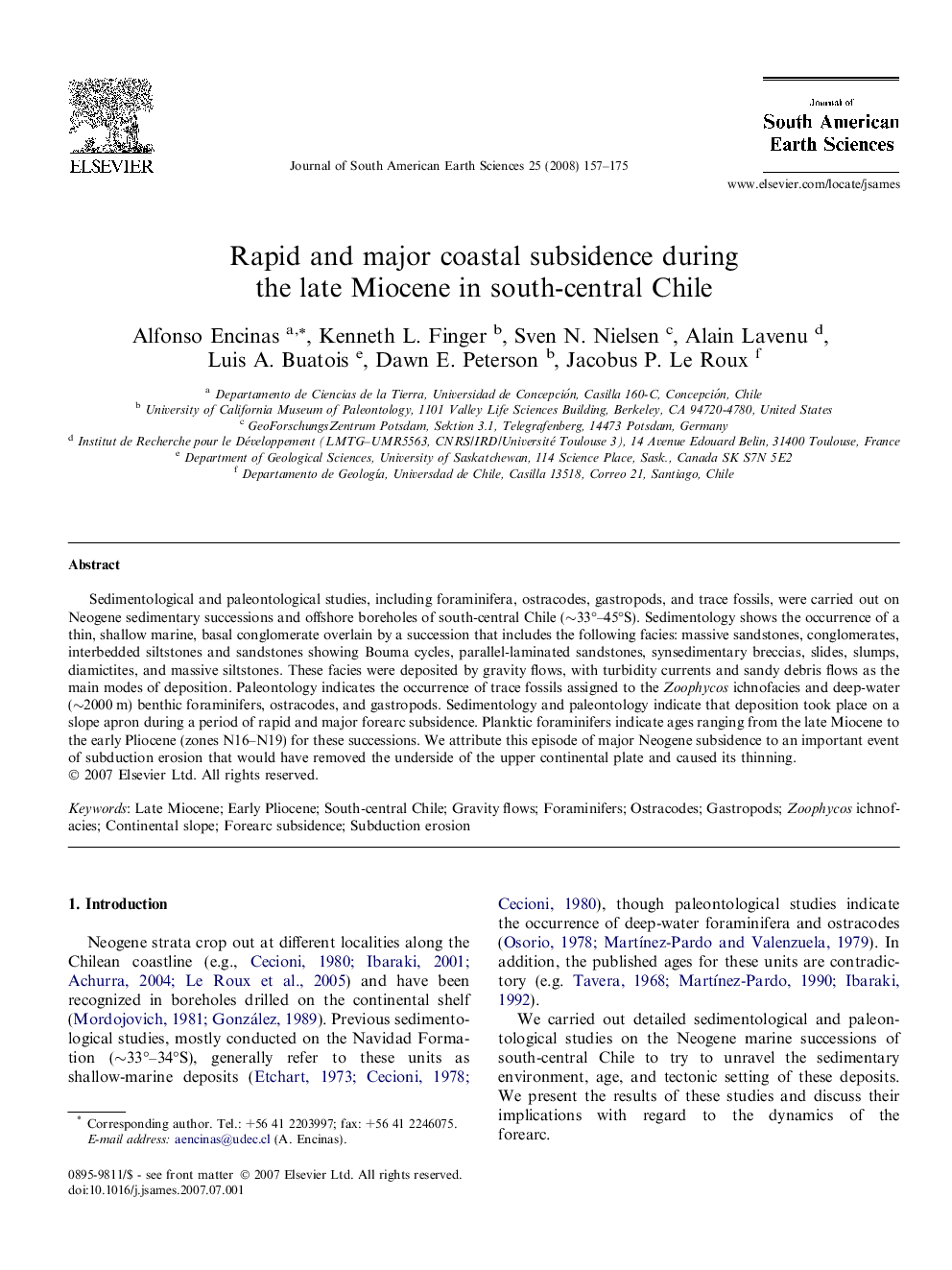| Article ID | Journal | Published Year | Pages | File Type |
|---|---|---|---|---|
| 4683036 | Journal of South American Earth Sciences | 2008 | 19 Pages |
Sedimentological and paleontological studies, including foraminifera, ostracodes, gastropods, and trace fossils, were carried out on Neogene sedimentary successions and offshore boreholes of south-central Chile (∼33°–45°S). Sedimentology shows the occurrence of a thin, shallow marine, basal conglomerate overlain by a succession that includes the following facies: massive sandstones, conglomerates, interbedded siltstones and sandstones showing Bouma cycles, parallel-laminated sandstones, synsedimentary breccias, slides, slumps, diamictites, and massive siltstones. These facies were deposited by gravity flows, with turbidity currents and sandy debris flows as the main modes of deposition. Paleontology indicates the occurrence of trace fossils assigned to the Zoophycos ichnofacies and deep-water (∼2000 m) benthic foraminifers, ostracodes, and gastropods. Sedimentology and paleontology indicate that deposition took place on a slope apron during a period of rapid and major forearc subsidence. Planktic foraminifers indicate ages ranging from the late Miocene to the early Pliocene (zones N16–N19) for these successions. We attribute this episode of major Neogene subsidence to an important event of subduction erosion that would have removed the underside of the upper continental plate and caused its thinning.
